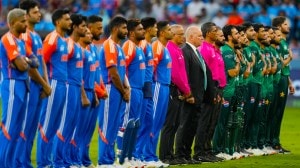Ringing in OneIndia
OneIndia, a grand scheme to install a single rate for all phone calls within the country, has taken the imagination of telecom players and c...

OneIndia, a grand scheme to install a single rate for all phone calls within the country, has taken the imagination of telecom players and customers by storm.
With its assurance to stick a pin into ballooning monthly bills and remove tiresome cost-calculations on every long-distance call, its third stated objective is to give rural telephony a leg up.
OneIndia implies doing away with STD charges — only a hop away from ‘flat-rate’ phone lines at many homes in developed countries. Operators have welcomed the concept and the telecom ministry has made it clear that OneIndia will be implemented.
‘‘The government will make sure that very soon we will have uniform rates within the country. We will have ‘OneIndia’ under which calling within the country will be like calling within a state,’’ Telecom Minister Dayanidhi Maran said recently.
OneIndia holds the promise of removing a regime that private players and the telecom regulator Trai think has not worked: The Access Deficit Charge (ADC) system, under which huge payouts to public sector telecom ventures fund rural connectivity.
‘‘This is a welcome move, a positive step towards improving mobile penetration,’’ said Vikram Mehmi, CEO, Idea Cellular on OneIndia.
OneIndia, in many ways, also gels with recent moves by Trai, whose surveys show rural connectivity has been a non-starter, despite the ADC.
‘‘More than 50 per cent of rural lines do not work. That is one reason why the ADC regime is being phased out,’’ said a Trai official.
Rural teledensity is roughly at 1.7 per cent, while urban teledensity was closing in on 27 per cent by June this year.
No deadline or target has been set for OneIndia yet, and players such as state-owned BSNL, and the Department of Telecom (DoT) do not believe OneIndia can take off in a hurry.
‘‘It will take at least two years to materialise — and there will be a price to pay,’’ says a BSNL official.
One of the costs of compliance to OneIndia, is the chicken-and-egg problem posed by uniform tariffs. At current local call rates, telecom players profits will erode under OneIndia. If the higher STD charges are made the benchmark, local callers will suffer. And the middle ground will squeeze operators efforts to differentiate.
In India, more than 70 per cent of phone calls are local, and most phone owners call locally rather than over long distances. This makes the situation very different from in the West, where long distance and international revenues are significantly higher.
So will telecom never go the international flat-fee way in India? Says telecom consultant Mahesh Uppal, ‘‘It can, but in the US, Canada or UK, flat-fee offers are not plans imposed by a regulator or government. Telecom companies do it to differentiate or make themselves more attractive to customers.’’
Besides, everyone from the telecom regulator to telecom players are getting weary of the ‘‘top-down approach’’ towards rural telephony.
‘‘If it made economic sense to go into rural areas, private telecom players would have set up networks there. That they have not, demonstrates, in economic terms, a ‘market failure’. A regulatory diktat may not be able to resolve this,’’ says a telecom consultant.
If OneIndia does turn out to be what rural consumers are waiting for, telcos will rake in moolah and teledensity will race for the next 100 million customers. But if it doesn’t, OneIndia, lower phone bills, more rural telephony and higher telecom revenues will remain, at least, a grand concept.
Photos




- 01
- 02
- 03
- 04
- 05



























